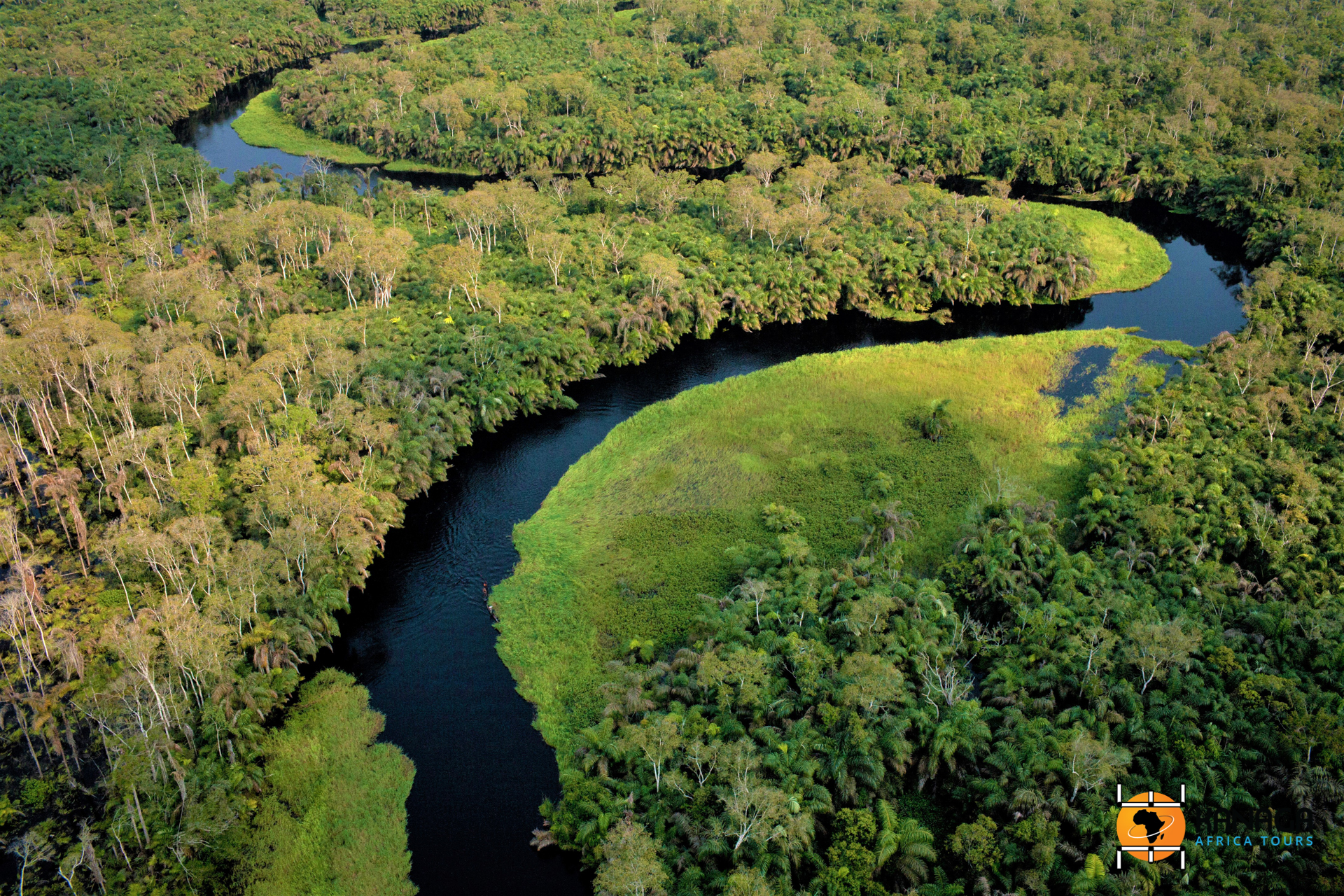The natural scenery along the course of the Congo River has not changed much since the time when Conrad wrote his masterpiece The Heart of Darkness. Majestic and wild river landscapes, of a bursting nature, of impenetrable arboreal backdrops and mangrove tunnels bordering its banks, sporadically interrupted by sandbanks and clearings that host remote fishing villages, whose survival depends on the rushing flow of water and the rhythms of nature.
Its stream, Africa’s first in terms of water flow and second in length after the Nile, as well as the deepest in the world, originates as the Lualaba River in the south of the Democratic Republic of Congo, from where it flows northwards crossing the Equator line, then bends west and south, demarcating almost the entire border with the Republic of Congo, finally flowing into the Atlantic Ocean, but continuing to be connected to the north, to the heart of Africa, via the Oubangui and Sangha affluents. At 4,500 km, it could be one of the longest fully navigable rivers in the world, if only south of Brazzaville and Kinshasa it were not interrupted all the way to its mouth by the Livingston Cataracts, and to the north, in DRC, by those of Boyoma (Stanley Falls, north of which it changes its name to the Congo River) and Puerta del Inferno. Despite these natural barriers, the Congo River is ‘an immense river highway‘, a fundamental communication route that disperses itself into innumerable branches and tributaries. An interminable vein of water and its capillaries, widening and narrowing, contracting and dilating, suddenly accelerating and plummeting or slowly flowing, it traverses one of Africa’s most impenetrable territories, representing the main route into the darkness of the equatorial forest, and a few sporadic towns in the northern territories.
As one travels up its course north of Brazzaville and Kinshasa, overlooking the Stanley Pool (Malebo Swamp) and the magnificent Mbamou Island, the villages one encounters are numerous on both banks and on the mosaic of islets, well connected by a continuous bustle of boats, from the largest motor boats or pirogues to the traditional rowing mokoros (hollowed-out tree trunks), but as one moves further and further away from their hinterland and from the range of daily tourist excursions, one penetrates more and more into a mysterious and primordial territory, where it is only nature that swallows up the banks, sporadically opening up in small clusters of a few thatched huts.
Exceptional flora and fauna characterise the entire and immense Congo River basin, with a sampling of thousands of equatorial plants and bird species, 700 different families of fish and a multitude of wild animals, such as bonobos, chimpanzees, lowland gorillas, elephants and forest buffaloes.
A nature that becomes the protagonist of bivouac nights, for the more adventurous travellers, on some remote islet or tongue of sand, under millions of stars and among the wildest corners described by Conrad.
Navigating the Congo River remains today an adventure worthy of the greatest exploits of the 19th century explorers, retracing their experiences in their entirety, in the heart of the most mysterious and impenetrable Africa, where the names of Stanley, De Brazza and Livingston still resound, like an echo that lingers in the forest and mingles with the cries of primates and birds.







